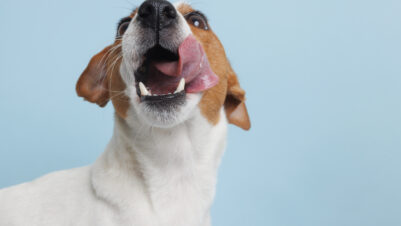
It is common for horses and ponies to be stabled more during the winter months, but this increased restriction can lead to owners observing behaviours which are difficult to manage both in the stable and when ridden. By considering what is motivating these behaviours, we can begin to understand how we can help the horse reduce their motivation to show the behaviour, thus providing long-term behaviour resolution.
Horses and donkeys have spent millennia evolving as social species, constantly moving and foraging while remaining vigilant of predators and reliant on their friends to watch over them to sleep safely. Six thousand years of domestication has done little to alter these established behaviour traits. These aspects of behaviour are considered a behavioural need for horses, so when they are restricted from performing movement, social and foraging behaviours they can show signs of stress and rebound behaviours.
One way of explaining this is with the “stress bucket” analogy shown in Figure 1. Stressors such as lack of movement go into the horse’s “bucket” and as it fills the horse is less able to cope with frustration so the bucket begins to overflow. This is when rebound behaviours or other signs of stress occur. Providing opportunities to “empty” the bucket by allowing equids to show natural behaviours and relax can reduce the likelihood of the horse’s bucket overflowing.

Considerations for increased confinement
Increased confinement is an aspect of recent changes in management that we expect horses to cope with. Stabling overnight is common practice, and single stable and paddock turnout is a common form of management (Yarnell et al., 2015).
As winter draws in, many horses will spend increasing amounts of time within their stable each day. When the weather is severe some may stay inside for 24 hours or more for a “duvet day”. As well as this reduced turnout, horses may be experiencing reduced exercise due to lack of light, time restraints or adverse weather conditions.
Social isolation
Single stables commonly restrict access to other equids, yet social isolation is regarded as a considerable source of stress for horses. Increasing social availability in a stable through windows or social housing can reduce expressions of stereotypy, aggressive behaviour (Mills and Nankervis, 1999; Ruet et al., 2019) and other behaviours indicative of stress, including pawing, biting, resource guarding, pacing or increased vigilance.
Forage availability
When horses have access to ad lib forage they generally show natural feeding rhythms. Their foraging bouts are rarely more than one hour apart and only natural behaviour needs such as sleep or movement extend the period to three or four hours. If a horse runs out of forage for over six hours, it is related to ulcer formation (Luthersson et al., 2009).
Simple management changes such as encouraging the use of straw in a stable is shown to have several benefits including increased lateral recumbency, reduced stereotypy, reduced aggression, reduced bed eating and increased time spent showing exploratory behaviour
Simple management changes such as encouraging the use of straw in a stable is shown to have several benefits including increased lateral recumbency, reduced stereotypy, reduced aggression, reduced bed eating and increased time spent showing exploratory behaviour. Their time is filled with more natural foraging behaviour when bedded on straw or with straw available as a second forage choice which reduces the opportunity and motivation to show frustration or boredom-based behaviours.
The use of straw as a carefully introduced foraging opportunity can help to increase horses’ choice of forage type and allow owners more freedom to offer it in loose form. This increases the complexity of the stable environment while not significantly increasing calories. If slow feeders are used to increase forage time they must be introduced slowly and at an appropriate level of challenge to reduce any signs of frustration that can be shown.
Movement patterns
When equids are restricted from showing natural movement patterns, including walking while they are eating and cantering, they can show rebound behaviour when they are next offered time out of their stable and given free movement. Rebound behaviours, which may include cantering and bucking, can cause injuries to handlers or riders, but providing regular opportunities for social interactions and movement can reduce this behaviour.
When equids are restricted from showing natural movement patterns, including walking while they are eating and cantering, they can show rebound behaviour when they are next offered time out of their stable and given free movement
If a field or paddock is not available, turnout in a sand school with friends or a non-grass area can meet these needs; this can be particularly beneficial for laminitic horses and ponies.
Withdrawn behaviours
A lack of expression of behaviour in the stabled horse is also concerning behaviour. Fureix et al. (2012) describe a withdrawn posture, with the horse’s head stretched out, their neck at a similar level to their back, and with their eyes open but gazing at nothing. This posture has been related to a depressed state, withdrawing from their environment and finding limited good moments.
The Five Domains Model (Mellor et al., 2020) explores how we have to consider the positive emotions that our animals experience in life and recognise that what we provide them with should be more than an existence; it must be a life worth living.
What are the behavioural signs that can be early indicators that a horse is stressed in its environment?
- Increased vigilance or agitation
- Raised head carriage
- Flared nostrils
- Change in angle of eye wrinkles
- Pacing
- Facial and body tension
- Increased defecation
By recognising and acknowledging these early signs of stress, we can identify the horses that need proactive intervention before they show greater signs of distress and potentially dangerous behaviours, including repetitive movements, rebound behaviours or a withdrawn state.
What can we change?
Increasing the opportunity for horses to express natural behaviours and offering them activities to fill their time can reduce stress and feelings of boredom and frustration. By assisting owners in identifying and acknowledging the early signs of stress in a stabled horse and offering achievable effective alterations to their environment, equid welfare can be improved for the long term.
By assisting owners in identifying and acknowledging the early signs of stress in a stabled horse and offering achievable effective alterations to their environment, equid welfare can be improved for the long term.
Veterinary professionals are in a position to support and advise owners about their horses’ management, especially when restriction for health reasons is required. Wherever possible, encouraging owners to increase the horses’ time out in an environment with friends and providing access to ad lib forage is the best solution for the horse. However, this is not always achievable for owners due to ground conditions, and all horses are individuals in their needs.
Discussions with owners can help identify their equines’ signs of subtle stress and encourage recognition of the importance of the behaviours seen before the more significant signs of stress such as aggressive behaviour, general agitation or stereotypic behaviours develop.
Suitably accredited behaviour consultants can support the vet-led team when horses are showing signs of stress during stabling. If they are on box rest or turnout cannot be increased, a behaviourist can assess current horse time budgets, stable environment possibilities and other enrichment opportunities to support a horse.
Five top tips to reduce stress in a stabled horse
- Open the doors! Increase turnout or consider alternative management practices such as track system, social living, yard system or paddock paradise
- Provide multiple forage points. This improves choice and increases the natural movement patterns which are preferred by equines. Consider high and low hay nets and loose hay for posture
- Make more social opportunities. Think about providing time without rugs to allow for mutual grooming which can lower heart rate, and remember that social eating reduces rebound behaviour
- Think about stable structure. Windows to the outside world have reduced signs of stress in stabled horses. Straw increases lying behaviour and foraging opportunities and reduces aggression and stereotypy, and large stables increase the opportunity to lie down. Consider how the inside and outside area of the stable might allow for choice and movement
- Add enrichment. You might consider using food balls to increase foraging behaviour or scratching posts for self-care. Sensory enrichment can be provided using different flavours and textures of food including twigs, branches or logs. Smell enrichment using lavender can be calming, and think about using music and company








